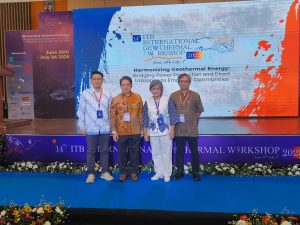Jakarta – A recent study by the Institute for Essential Services Reform (IESR), together with RE100 and IEEFA, recommends a transmission network joint utilisation scheme as a solution to the slow growth of the renewable energy mix and the stagnation of clean energy investment.
In the study “Accelerating Renewable Energy Investment in Indonesia—Joint Utilisation of Transmission Networks,” PJBT is proposed as a model that allows private generators to distribute green electricity directly to industrial consumers using PLN’s infrastructure.
Currently, the centralised structure of the electricity industry under the control of PLN is considered one of the inhibiting factors. PLN controls the electricity generation, transmission, and sales chain as a single buyer.
“Without policy innovation and new business models, renewable energy development will find it difficult to compete and attract the investment needed to pursue the target,” said Fabby Tumiwa, Executive Director of the Institute for Essential Services Reform (IESR), on Wednesday, 30 April.
Although the government’s National Electricity General Plan (RUKN) targets the renewable energy mix to reach 15.9 per cent by 2025 and 21 per cent by 2030, the reality is that the achievement is only around 15 per cent. Meanwhile, renewable energy investment stagnates at USD 1.5-1.8 billion per year, still far from the target of USD 2.6 billion by 2024.
PBJT should be included in the New and Renewable Energy Bill (EBET Bill) and integrated into PLN’s RUPTL to accelerate implementation. Thus, this model can be a major catalyst in achieving clean energy targets and invite more investors into the green energy-based power generation sector.
Ollie Wilson, Chairman of RE100, said such schemes are typical in many countries and have been proven to accelerate the energy transition.
“With more than 130 RE100 members operating in Indonesia and committed to 100% renewable energy by 2050, the demand for green electricity is already there. What is needed is a market mechanism that allows Indonesia to compete and strengthen its position as a leader in Asia’s energy transition,” he said.
Massive economic and investment potential
An IESR study shows Indonesia’s technical renewable energy potential is more than 3,700 GW. Around 333 GW can be developed economically under current tariff regulations. With the PBJT scheme, the private sector can access projects outside of PLN’s planning (RUPTL), while strengthening the national grid.
In fact, according to Mutya Yustika, Energy Finance Specialist at IEEFA Indonesia, PBJT has the potential to close the electricity infrastructure funding gap, which is estimated at USD 146 billion. “PLN can get additional revenue of up to USD 5 billion per year from network leasing and ancillary services. This is not only a business opportunity, but also a solution for the sustainability of the national electricity system,” she said.
The study highlights four main principles for the PBJT scheme to run optimally: direct access from generators to industrial consumers, fair and transparent network rental rates, time—and cost-efficient interconnection processes, and contracts that include network rules, supply commitments, and balancing costs.
IESR also recommends several concrete steps, including setting an initial fee for developers for network upgrades before the project goes live and establishing a PLN subsidiary specialising in transmission to improve cost transparency.
Then the establishment of annual quotas and a road map for EBT development will provide developers and consumers with certainty. (Hartatik)
Banner photo: Image generated by OpenAI’s DALL·E via ChatGPT (2024)













